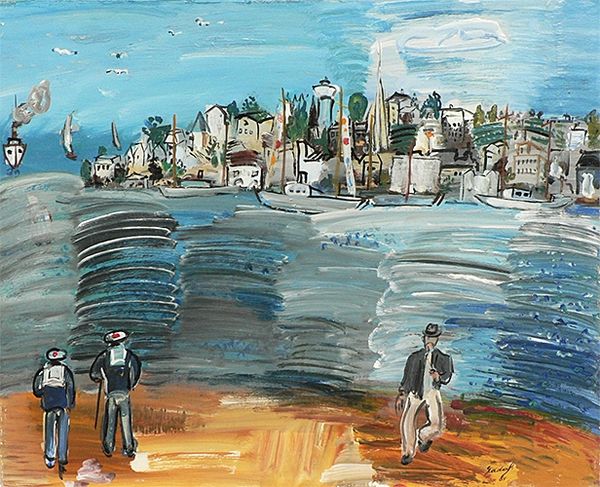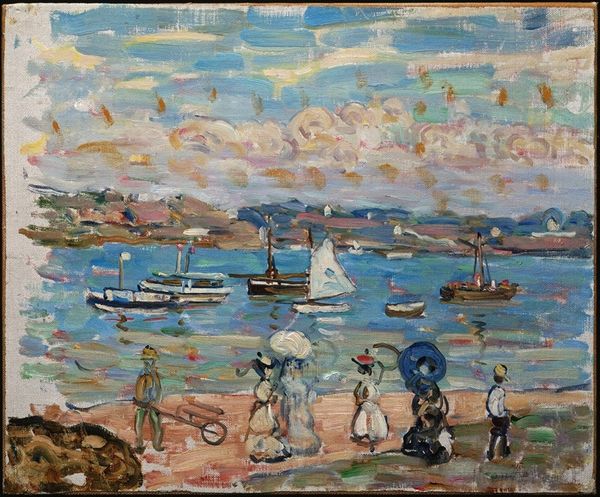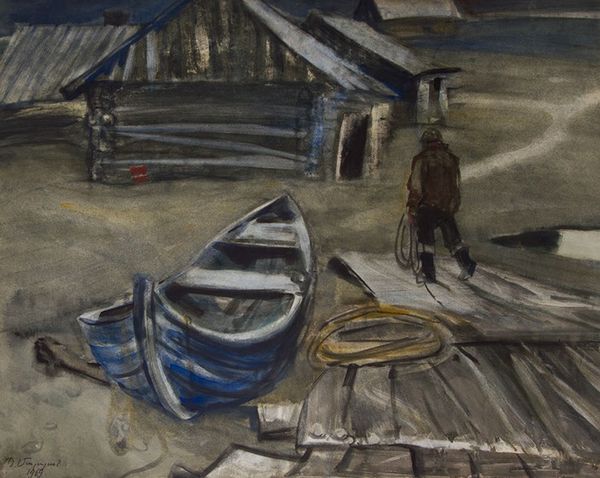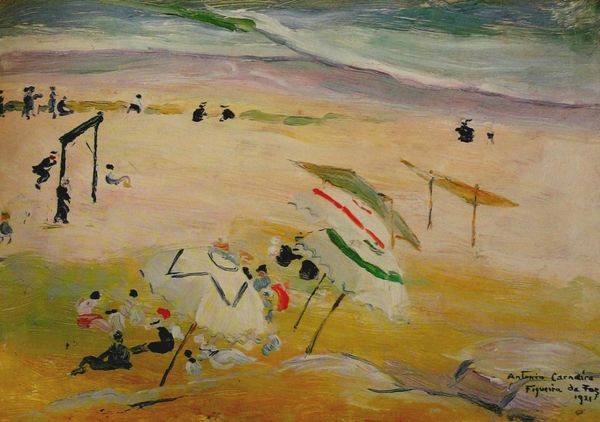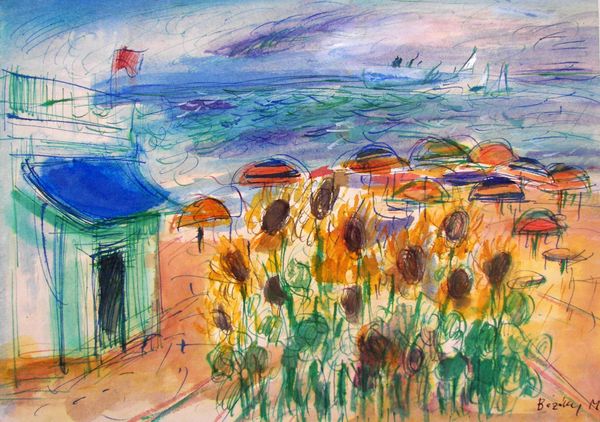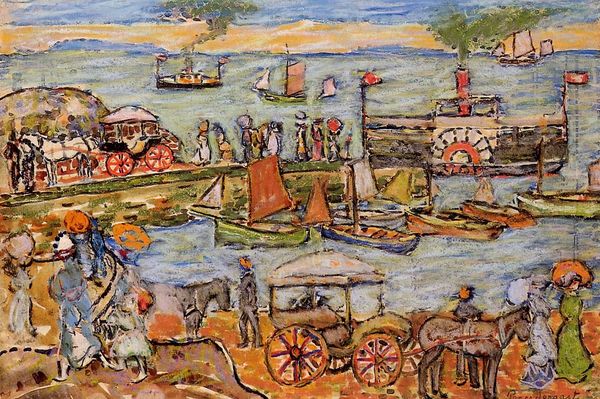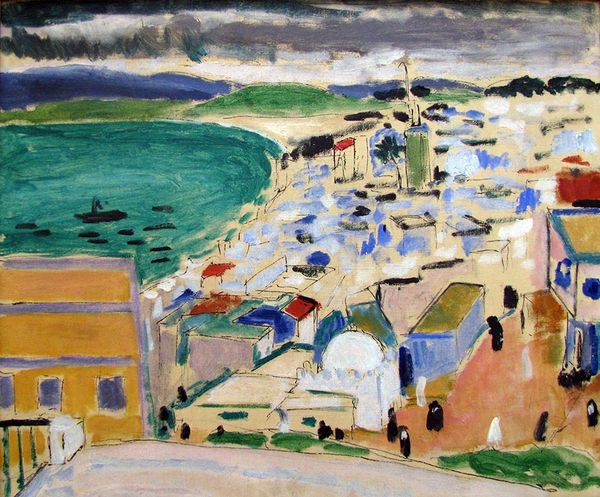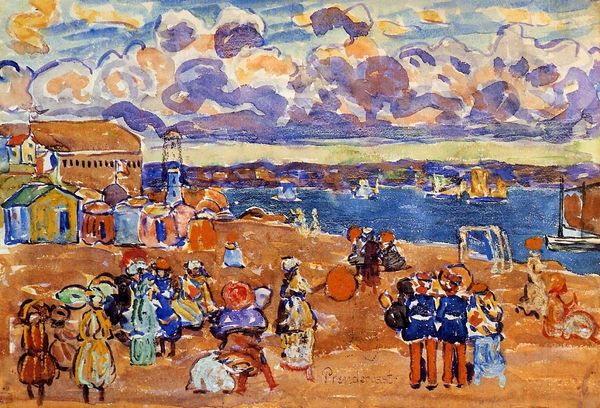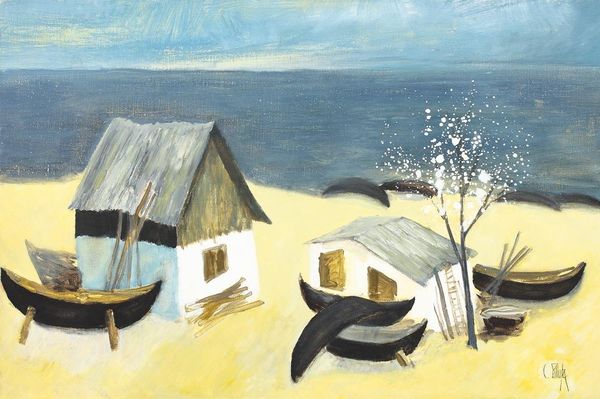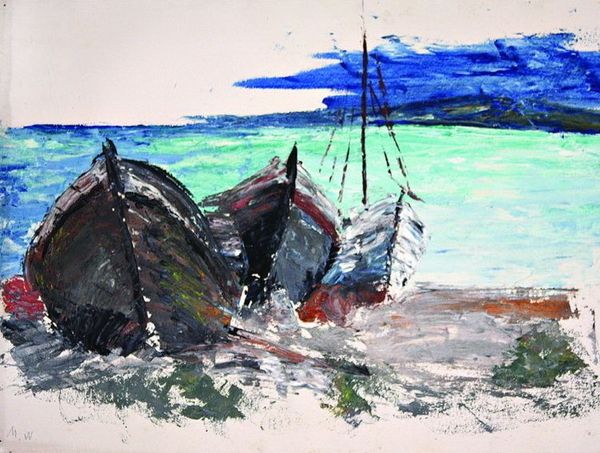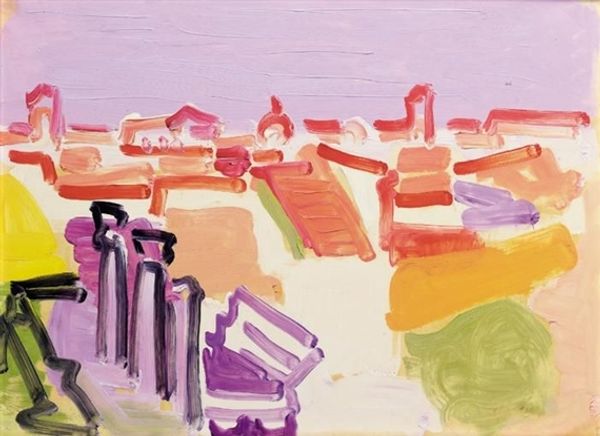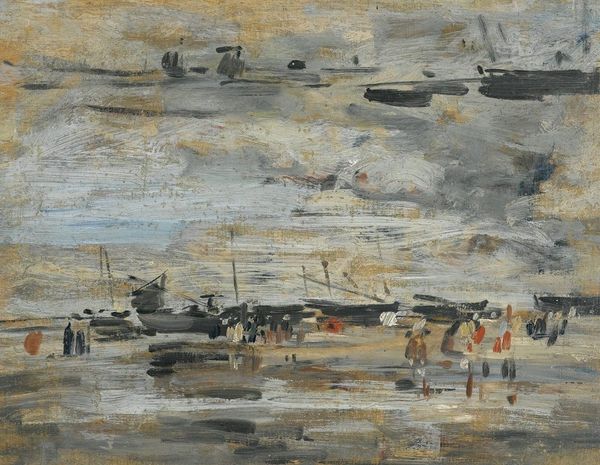
Copyright: Carlos Nadal,Fair Use
Editor: Here we have "Playa," painted by Carlos Nadal in 1984, apparently with acrylic paint, maybe even en plein air. It's got this casual, almost impulsive quality to it. How do you interpret this work? Curator: Nadal's "Playa" transports me to a very specific historical and political moment. Look at the rapid brushstrokes, the juxtaposition of leisure—the beach, the boats—with something heavier, industrial even. Given that it’s painted in 1984, might we consider this through the lens of post-industrial anxieties? The rise of leisure economies often masks deeper socio-economic shifts. What’s your take on that relationship? Editor: I hadn’t considered that. I was stuck on the visual aspects – the loose brushwork reminding me of Impressionism, but dirtier, edgier. The boats feel almost…invasive, compared to the small human figures. Curator: Precisely! The scale and prominence of those boats compared to the figures raise important questions about power, labor, and who gets to occupy and enjoy the ‘playa.’ Consider how tourism itself can be a form of neocolonialism, impacting local communities and environments. How might Nadal be commenting on that? Editor: So, it's not just a pretty picture of a beach, but a statement about the complexities of modern life and perhaps even a subtle critique of tourism's impact? Curator: Exactly! It's in these layered meanings, by digging into the historical and socio-political contexts, that art truly resonates. And that perhaps the most seemingly innocent of paintings can carry surprisingly complex social messages. Editor: I see what you mean. It definitely makes me see the painting in a new light. There is always more there than meets the eye at first glance. Curator: Indeed. And that's the ongoing dialogue that art invites, constantly challenging our assumptions and expanding our understanding.
Comments
No comments
Be the first to comment and join the conversation on the ultimate creative platform.
